Last Updated on December 18, 2023 by Erik Sullivan
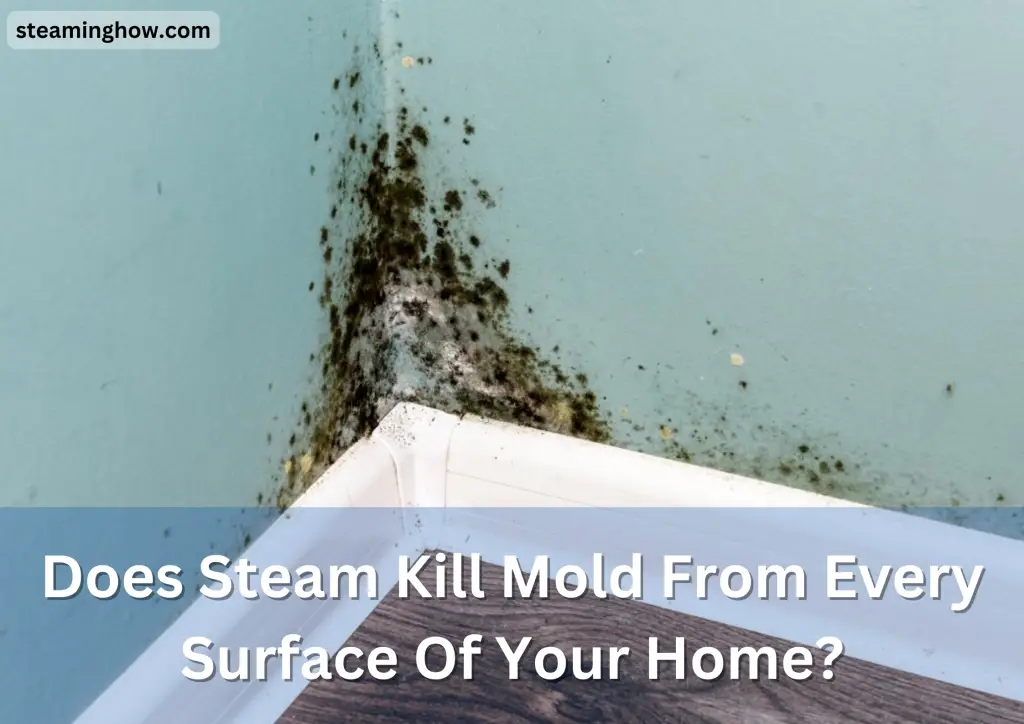
Mold can grow almost anywhere, especially on wet materials of your home and building. It often appears as a black or greenish patch on walls, floors, and other surfaces. While mold isn’t always harmful, it can cause damage to your property. Besides that, it can also contribute to health problems for some people.
Therefore, you must get rid of mold from every home surface as soon as possible.
Many homeowners often ask a very common question, does steam kill mold/mildew?
Does Steam Clean Mold?
Yes. Steam cleaning is an effective way to remove mold from various surfaces of your home. Molds and their spores are killed at temperature of 140-160°F.
A household steam cleaner can produce very hot steam between 170-212°F.
This high temperature steam penetrates the affected surface and kills the mold spores on contact. This method is especially effective on porous materials like grout, carpet, and fabric.
Another important factor to consider is the amount of time that the steam comes into contact with the mold spores. For steam to be effective, it should be in contact with the mold spores for at least 30 seconds.
Table of Contents
What Is Mold and Where Does It Grow in your Home?
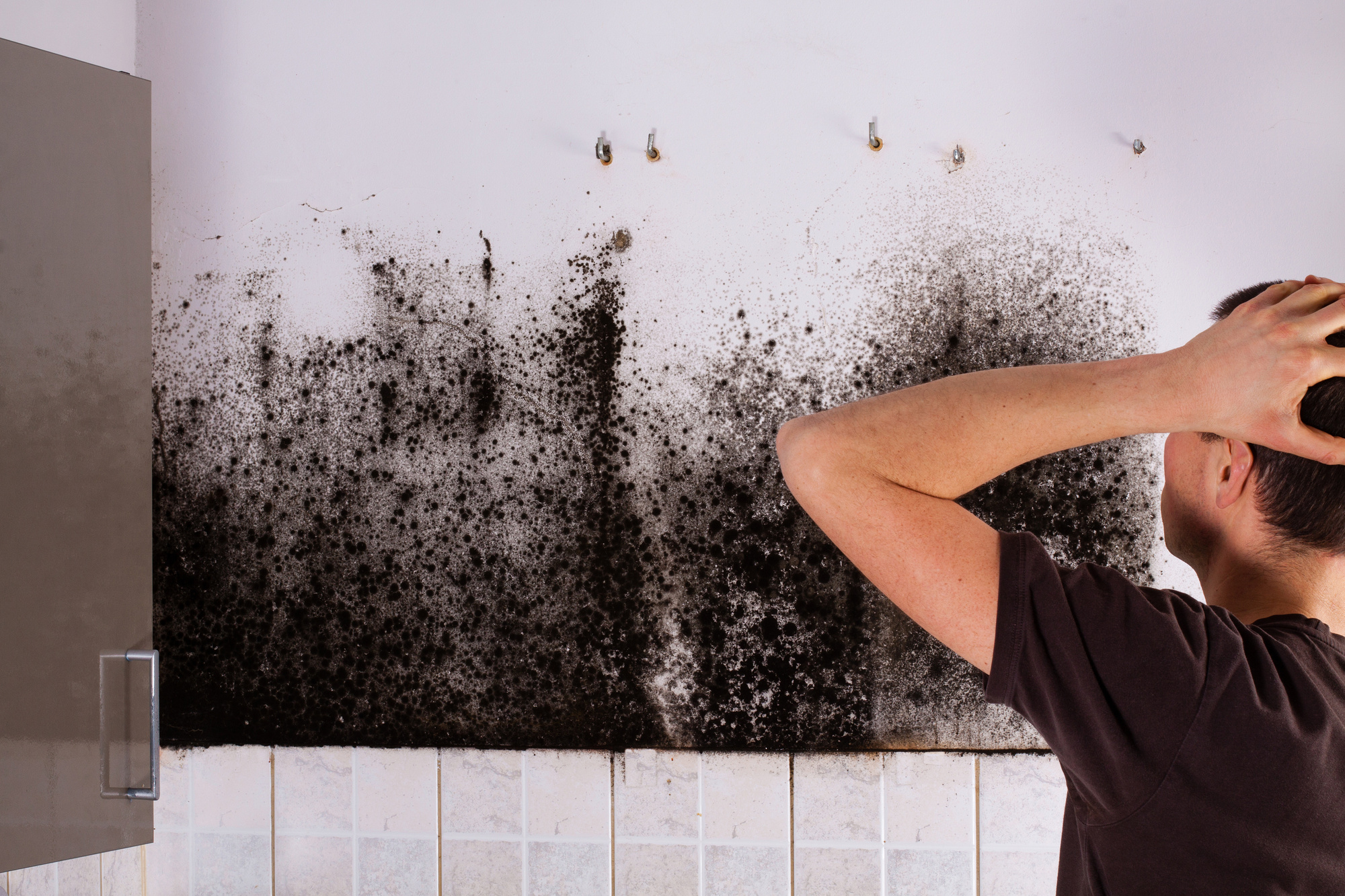
Mold is a type of fungus that can be found both indoors and outdoors. They often appear as black, white, or greenish-black patches and they have a musty, and earthy smell.
Mold typically grows in moist environments such as pipes, windows, roofs with leakage, overflowing washing machines etc. They love to thrive in areas with no light at all.
They can also grow on any organic surface, such as wood, paper, carpet, food, and soil. They digest those materials and cause damage to the surface over time.
Besides that, they’re common in damp environments like basements and bathrooms, but they can also grow in drier areas like closets and garages that have poor ventilation and sunlight.
It’s important to clean up any mold you find and to fix any water damage that may be causing the problem. If you have a mold allergy, you should avoid contact with mold spores.
Because, it can cause adverse health effects in people who are exposed to it.
How To Apply Steam To Kill Mold From Various surfaces?
You can use a good quality steam cleaner to eliminate mold from various surfaces in your floor tiles, upholstery, mattress, carpet, windows etc.
When using a steam cleaner, you need to make sure that the steam is evenly distributed over the surface of the moldy area.
Well, before getting started you’ll need a household steam cleaner with brush attachment. The brush attachment will allow you to loosen the mold from the surface.
Removing Mold From Your Carpet With Steam
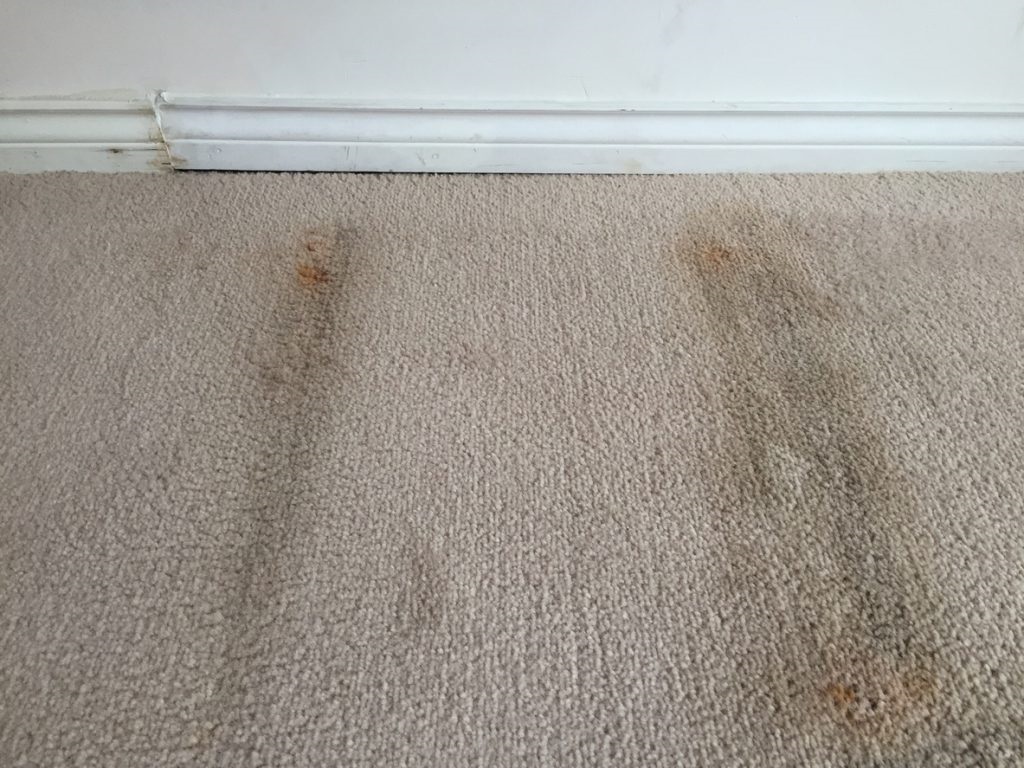
If you found that your carpet or rugs are affected with mold, then follow this process to eliminate the mold completely.
You’ll need the following items:
- A vacuum cleaner with hepa filter
- A steam cleaner (Make sure the steam output is nearly 200°F)
- Distilled water
Step 1: First, you need to vacuum the carpet to remove as many mold spores as possible. Make sure to use a HEPA filter vacuum cleaner to avoid spreading the mold spores in the air.
Step 2: Attach the most suitable steam nozzle that comes with the steam cleaning machine. Few steam cleaning devices feature a “spotlight nozzle” for cleaning targeted areas.
Step 3: Next, Pour distilled water into the steam cleaners tank and turn it on. Give the machine some time to heat up.
Step 4: Once your steam cleaner is ready for steaming you can start using it on your carpets moldy areas. Apply steam blast and slowly move the stem nozzle over the affected areas. The heat will kill the developing mold. It should not take more than 10 minutes for the steam cleaner to eliminate the mold.
Step 5: After you’re done with the steam cleaning, don’t forget to air dry your carpet or area rugs.
N.B: You can apply this method on your car carpet as well.
Read also: Does Steam Kill Carpet Beetles And Their Larvae?
Remove Mold From Tile And Grout With Steam
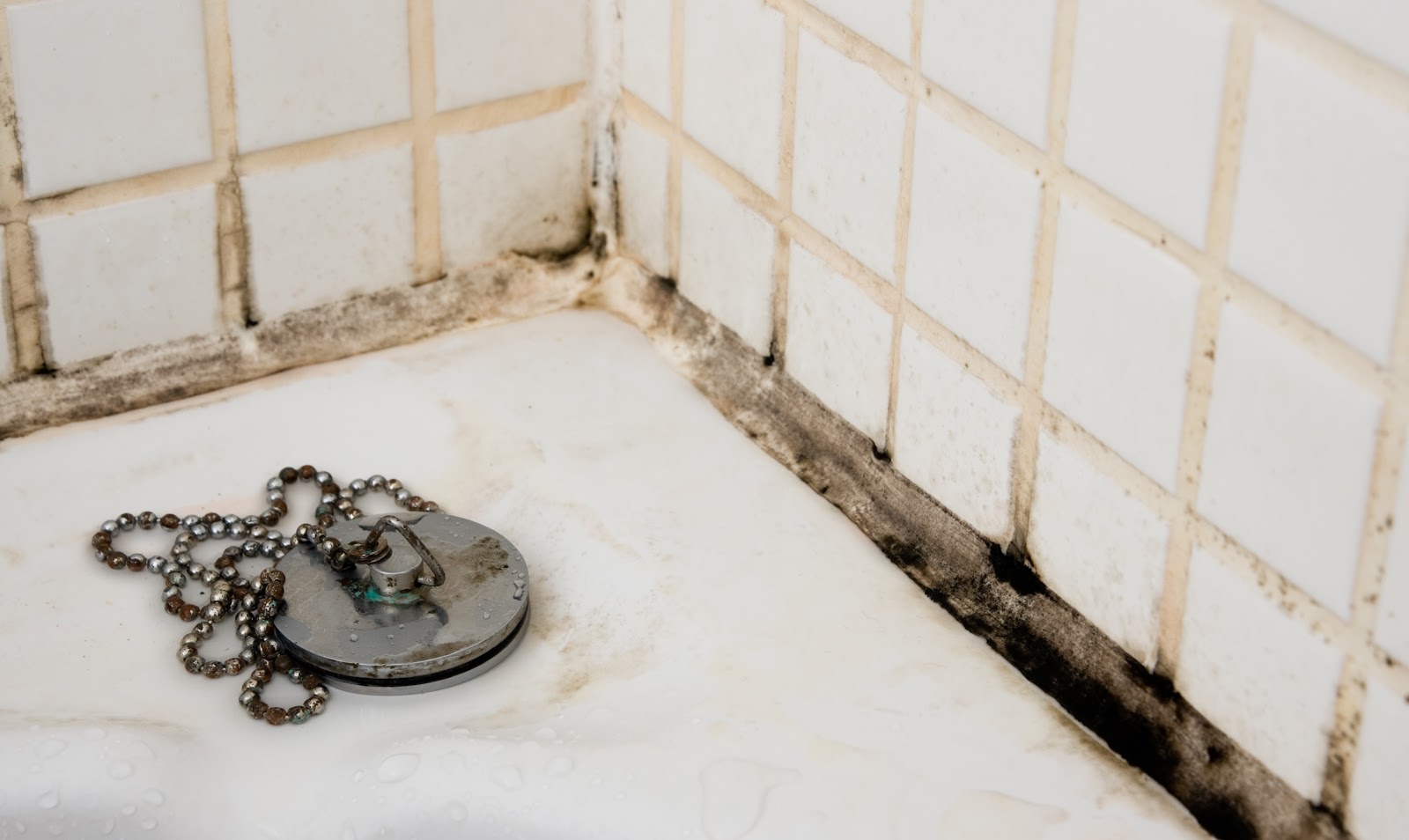
Mold can easily grow on your bathroom and kitchen tile and grout. Tile and grout are two other surfaces where mold can easily grow. The best way to clean mold from these surfaces is by using steam.
You can use a handheld steam cleaner like this one from Bissell. It’s a handheld steam cleaner that is very efficient for removing grout from your floor surface.
Things Required:
- Steam cleaner with grout brush nozzle
- A hand brush or vacuum cleaner
- Distilled water
- Old towel
The Process:
1. First of all I recommend cleaning the tile corners with a hand brush or a sweeper to remove dirt, dust and any other loose debris from the surface. This will make the steam cleaning more efficient.
2. Next, get your steam cleaner and wait for the steam output.
3. Your steam cleaner may come with special grout brush attachment. Simply attach it with the steam cleaner.
4. Hold down the steam trigger on the handle and you’ll see that the steam will start to come out of the nozzle.
5. You can start cleaning the grout lines by back & forth motion.
6. Make sure to use an old towel to wipe down every single grout line after steam cleaning them. This will remove any loose particles from the surface.
7. Take your time. Apply steam burst consistently over the grout line. The high pressure steam will penetrate the mold and grime, where the bristle will loosen up the dirt.
Remove Mold From Your Walls And Ceilings
You can apply steam to remove mildew from your walls and ceilings. Just make sure to use the steam mop attachment with the extension wand to reach the high areas of the walls. It’s recommended to use dry steam on medium heat setting to avoid any damage.
What’s the best steam cleaner for mold?
You can use a multi-purpose steam cleaner for eliminating mold. I highly recommend this Karcher SC 3 Multi-Purpose Steam Cleaner for this job. It’s extremely powerful (over 200°F steam output) to get the job done quickly and efficiently.
The best thing that I really love about this unit is that it features some really essential accessories for steam cleaning the wall, floor, carpet, tiles, windows, etc.
How to kill mold and mildew without steam?
Steam cleaning mold is really effective but it requires a good amount of time and effort. If you want a quick result without wasting so much muscle power, then apply the following method.
Note that: You may need to apply a little elbow grease to get rid of all the mold in this process.
Use a White Vinegar solution
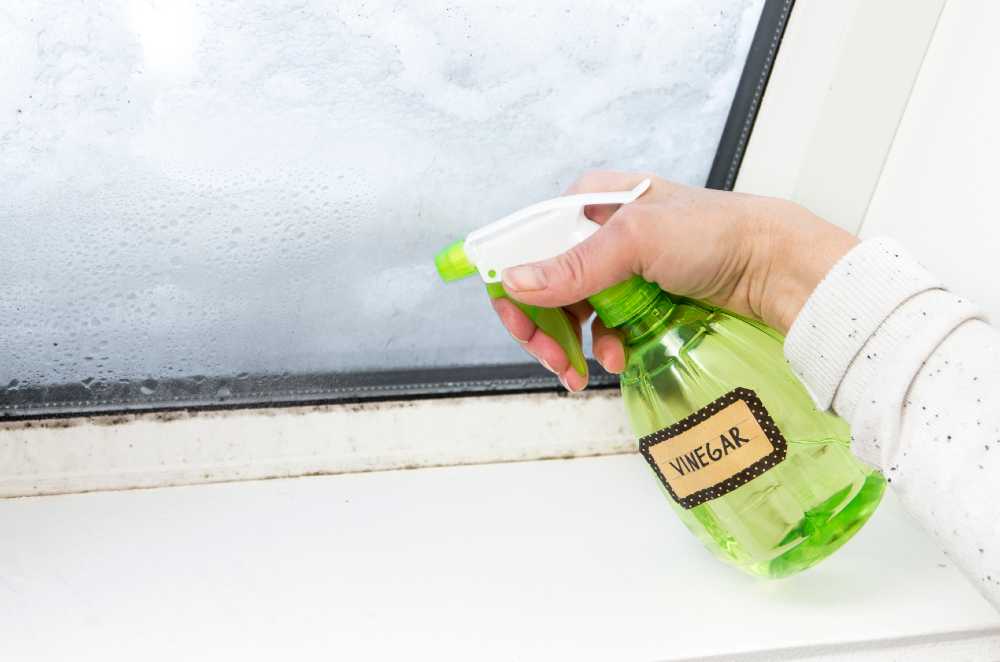
White vinegar is a natural disinfectant. It has antifungal and anti-bacterial property that will kill mold and mildew without the use of harsh chemicals.
On top of that, it’s the safest and most cost effective way to eliminate mold from your buildings. The best thing is, you can apply this method on almost all types of surface.
Warning: Wear a face mask and protective gear before getting started.
Here’s the step by step process:
Step 1: To remove mold and mildew with white vinegar, simply mix equal parts white vinegar and water in a spray bottle.
Step 2: Then, spray the mixture onto the affected area and let it sit for 30 minutes.
Step 3: After 30 minutes, scrub the area with a brush or a cloth. You may need to scrub a bit harder to remove the mold and mildew from porous surfaces like grout.
Step 4: Once you have removed the mold, wipe down the surface with a clean cloth or paper towel.
Step 5: Dry the area.
When Should I Call A Professional to eliminate mildew?
You can clean smaller affected areas of your home with the above method. But, according to the Centers for Disease Control and Prevention, you must call a professional if you notice mold in large areas of your building. They have the right equipment and know-how to do the job properly.
How to keep your home free of mold?
Mold and mildew can cause serious problems in your building, causing damage to your walls, ceilings, and floors. They can also cause health problems for you and your family.
Here are some tips on how to keep your home free of mold:
- Keep your home and buildings clean and free of clutter. Mold and mildew love to grow in dark, damp, and cluttered areas.
- Keep your home well ventilated. Mold needs moisture to survive, so good ventilation will help to keep your home dry and free of mold and mildew.
- Repair any leaks in your home promptly. Leaks in your roof, walls, or pipes are the perfect breeding ground of mold.
- Use a dehumidifier in your home, especially in damp areas. This will help to keep the air dry, which will make it less hospitable for mold and mildew. The humidity level should be between 30% and 50%.
- If you do find mold or mildew in your home, clean it up immediately and dry the area completely. Mold can spread quickly, so you must stop them as early as you can.
Frequently Asked Question
How long does it take for steam to kill mold?
In most cases, 90% of the mold get killed by the high pressure of steam within just 12 seconds contact time.
What temperature does mold die?
Most molds will die at temperatures above 140 degrees Fahrenheit. It’s important to note that the steaming time is also important. According to study, you must apply the steam to any surface for up to 20 minutes.
Will steam get rid of black mold?
Yes, steam can remove black mold. Mold spores are killed by temperatures above 140 degrees Fahrenheit, and the high heat of steam will easily reach these temperatures. Make sure to follow proper safety precautions when working with any kind of mold, as black mold can be particularly dangerous.
Read also: Black mold attic plywood
Conclusion
In conclusion, while steam can effectively kill mold on many surfaces, its efficacy may vary based on the surface material and the extent of the mold infestation. Steam’s high temperatures can eradicate mold on non-porous surfaces like tiles, glass, and metal effectively.
However, porous materials like drywall or wood may not respond as well to steam due to their ability to retain moisture, potentially leading to further mold growth. It’s essential to exercise caution and test a small area before extensive steam treatment, focusing on non-porous surfaces to avoid exacerbating mold issues in porous materials.
Combining steam treatment with proper ventilation and addressing underlying moisture sources ensures a more comprehensive approach to mold eradication throughout the home.
Related Posts

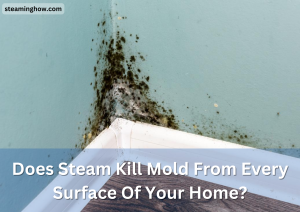




Leave a Reply